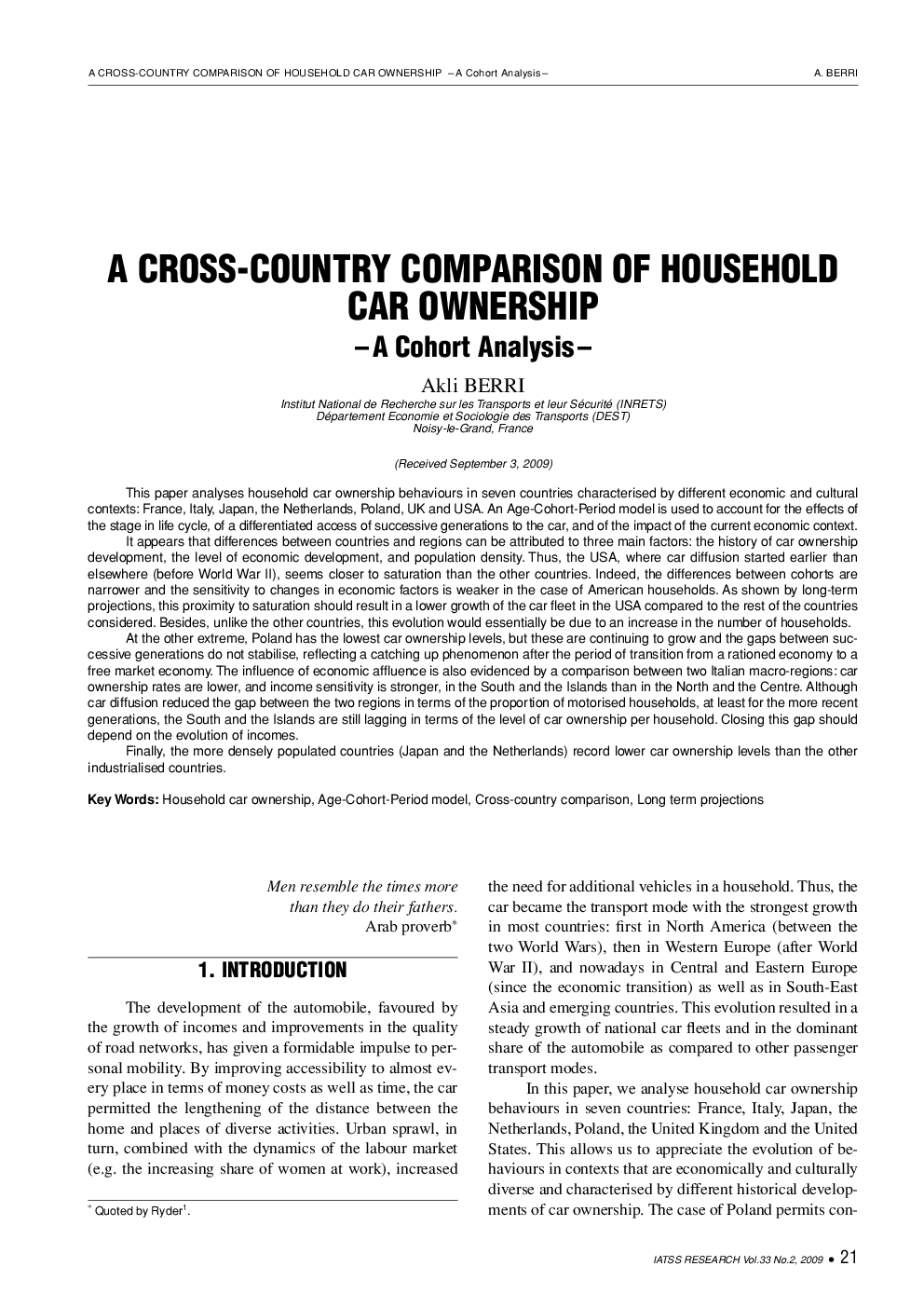| کد مقاله | کد نشریه | سال انتشار | مقاله انگلیسی | نسخه تمام متن |
|---|---|---|---|---|
| 1104789 | 954153 | 2009 | 18 صفحه PDF | دانلود رایگان |

This paper analyses household car ownership behaviours in seven countries characterised by different economic and cultural contexts: France, Italy, Japan, the Netherlands, Poland, UK and USA. An Age-Cohort-Period model is used to account for the effects of the stage in life cycle, of a differentiated access of successive generations to the car, and of the impact of the current economic context.It appears that differences between countries and regions can be attributed to three main factors: the history of car ownership development, the level of economic development, and population density. Thus, the USA, where car diffusion started earlier than elsewhere (before World War II), seems closer to saturation than the other countries. Indeed, the differences between cohorts are narrower and the sensitivity to changes in economic factors is weaker in the case of American households. As shown by long-term projections, this proximity to saturation should result in a lower growth of the car fleet in the USA compared to the rest of the countries considered. Besides, unlike the other countries, this evolution would essentially be due to an increase in the number of households.At the other extreme, Poland has the lowest car ownership levels, but these are continuing to grow and the gaps between successive generations do not stabilise, reflecting a catching up phenomenon after the period of transition from a rationed economy to a free market economy. The influence of economic affluence is also evidenced by a comparison between two Italian macro-regions: car ownership rates are lower, and income sensitivity is stronger, in the South and the Islands than in the North and the Centre. Although car diffusion reduced the gap between the two regions in terms of the proportion of motorised households, at least for the more recent generations, the South and the Islands are still lagging in terms of the level of car ownership per household. Closing this gap should depend on the evolution of incomes.Finally, the more densely populated countries (Japan and the Netherlands) record lower car ownership levels than the other industrialised countries.
Journal: IATSS Research - Volume 33, Issue 2, 2009, Pages 21–38